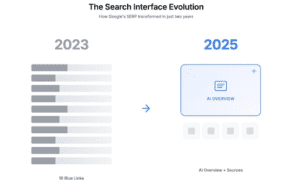Helicopters excel in diverse roles—from rescue missions to aerial tourism. Their unique capabilities, such as hovering and accessing remote locations, make them indispensable. Yet, their complexity demands rigorous maintenance. The stakes are high, as ensuring peak performance directly affects safety in high-pressure scenarios, especially during emergency responses or military operations. Advancements in Artificial Intelligence (AI) have enhanced helicopter efficiency, introducing features that bolster safety and reliability in flight.
Artificial Intelligence, having revolutionized industries like healthcare, is poised to make significant strides in aviation. With unparalleled data processing capabilities, AI aids in diagnosing mechanical issues, predicting potential failures, and bolstering the efficiency of helicopters. Furthermore, it elevates pilot training, ensuring utmost preparedness. This integration of AI and helicopter technology signifies a fusion of human innovation and machine precision, paving the way for enhanced safety and setting new standards for what helicopters can accomplish today.
Drawing from this fusion of human innovation and machine precision, Barry Oberholzer stands out with his unique experiences in aviation and AI. Raised in South Africa but with roots in Houston, Barry transitioned from the rugby fields, representing the U.S. in two Junior World Championships, to the intricate world of helicopter aviation. He has contributed to aviation titans like Base4 Aviation and JETT while also pioneering his ventures, notably 360 Aviation. Beyond his prowess as a pilot, Barry underscored his commitment to safety and security during roles with the FBI and Department of Homeland Security HSI. As the acclaimed author of “The Black Market Concierge,” Barry offers invaluable insights on the convergence of AI and aviation, wisdom that will be detailed further in this feature.
Predictive Maintenance:
One of the game-changers AI brings to the table is predictive maintenance.
Early Detection: By analyzing data from sensors embedded in various components, AI algorithms can detect anomalies or minor issues that might be overlooked in routine checks. This early detection prevents small issues from escalating into major malfunctions.
Forecasting Failures: AI can predict when a part is likely to fail based on its performance metrics and historical data, allowing for timely replacements.
“The role of AI in predictive maintenance, particularly in the realm of helicopters, is nothing short of groundbreaking,” says Oberholzer. “From the early detection of latent anomalies to forecasting potential component failures, AI ensures we’re not just reacting to challenges, but preemptively addressing them.”
Enhanced Diagnostic Procedures:
Traditional diagnostic methods can be time-consuming and, at times, rely heavily on the technician’s expertise.
Rapid Analysis: AI tools can quickly sift through massive datasets, making it easier to diagnose issues.
Consistency: AI ensures consistent diagnostics, eliminating human errors or oversights.
Augmented Reality (AR) Assistance:
AI-powered AR tools can guide technicians through complex maintenance procedures.
Visual Guides: Technicians can see superimposed images or animations on real-world objects, guiding them step-by-step through a task.
Remote Assistance: In remote locations, technicians can receive guidance from experts through AR interfaces, making maintenance more efficient and accurate.
“In today’s evolving aviation landscape, the convergence of AI and AR is proving to be a game-changer,” reflects Barry Oberholzer. “Where traditional diagnostic techniques often rested on the seasoned expertise of technicians, AI is ushering in an era of rapid and consistent diagnostics.”
Training and Skill Development:
Safety not only depends on the state of the machine but also the skills of the person handling it.
Simulations: AI-driven simulations can mimic real-life scenarios, helping trainees gain practical experience in a controlled environment.
Personalized Learning: Based on a trainee’s performance, AI can modify training modules to address individual weaknesses.
Operational Safety:
AI can also play a direct role in the operational safety of helicopters.
Collision Avoidance: By processing data from onboard sensors in real-time, AI systems can warn pilots of potential collisions or hazards.
Optimized Flight Paths: AI can analyze weather data, terrain, and other variables to suggest the safest and most efficient flight paths.
“AI’s role in operational safety, especially in areas like collision avoidance and flight path optimization, is undeniably significant,” says Barry Oberholzer. “These advancements not only elevate the standards of safety but also enhance precision in our field, ensuring that pilots and passengers benefit from the latest technological breakthroughs.”
Data Integration and Analysis:
A holistic approach to safety and maintenance requires data from multiple sources.
Unified Data Platforms: AI can integrate data from manufacturer manuals, operational history, weather patterns, and more to provide comprehensive insights.
Trend Analysis: Over time, AI can recognize trends or recurring issues, leading to better preventive measures.
“As we advance into a new era of aviation maintenance, data integration becomes the backbone of holistic safety measures,” says Barry Oberholzer. “AI’s ability to unify diverse data sources – from the nuances in manufacturer manuals to the unpredictability of weather patterns – is a testament to its unparalleled potential. Over the years, we’ve witnessed the transformative power of trend analysis; recognizing and addressing recurring issues before they escalate is the future of preemptive safety.”
While helicopters have been around for decades, the integration of Artificial Intelligence offers a new frontier in ensuring their safety and longevity. Predictive maintenance, enhanced diagnostic capabilities, AR-assisted repairs, and data-driven operational safety measures are just the tip of the iceberg. As AI continues to evolve, the aviation sector, including helicopters, stands to benefit immensely, ensuring safer skies for everyone.
Building on this momentum, the collaboration between AI and aviation is not only about technological advancement but also about human adaptability and innovation. As pilots, technicians, and stakeholders embrace these new tools, they’ll be better equipped to face challenges and adapt to ever-changing conditions. This synergy of man and machine brings a promise of not only improved efficiency but also an enriched flying experience. The future of aviation, with AI at its helm, looks safe and inspiring, charting a path for other industries to follow and learn from.
About Barry Oberholzer
Barry Oberholzer, a distinguished helicopter pilot, studied at the American Military University before earning his degree from the University of South Africa. His aviation journey began as a marketing manager with Base4 Aviation in South Africa, later taking to the skies as a pilot for JETT. Alongside his piloting expertise, he showcased his entrepreneurial skills at 360 Aviation and has ventured into tech initiatives. Additionally, Barry is the acclaimed author of the best-selling book, “The Black Market Concierge.”



































